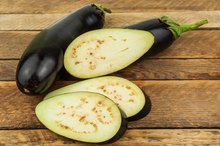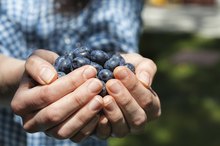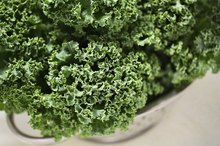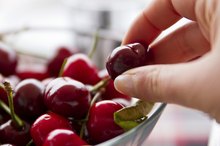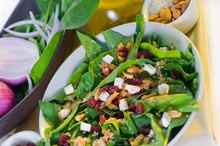What does fact checked mean?
At Healthfully, we strive to deliver objective content that is accurate and up-to-date. Our team periodically reviews articles in order to ensure content quality. The sources cited below consist of evidence from peer-reviewed journals, prominent medical organizations, academic associations, and government data.
- MedlinePlus; Taking Warfarin (Coumadin); March 2009
- MedlinePlus; Cranberry; February 2011
- “The Annals of Pharmacotherapy”; Warfarin-Cranberry Juice Interaction; GL Hamann, et al.; March 2011
- “The Annals of Pharmacotherapy”; Warfarin-Cranberry Juice Interaction; GL Hamann, et al.; March 2011
- “Clinical Therapeutics”; Interaction Between Warfarin and Cranberry Juice; CH Paeng, et al.; August 2007
- “Clinical Therapeutics”; Interaction Between Warfarin and Cranberry Juice; CH Paeng, et al.; August 2007
The information contained on this site is for informational purposes only, and should not be used as a substitute for the advice of a professional health care provider. Please check with the appropriate physician regarding health questions and concerns. Although we strive to deliver accurate and up-to-date information, no guarantee to that effect is made.
Why Is Taking Coumadin & Cranberry Juice or Tablets Harmful Together?
As with many prescription drugs, if you take Coumadin, the brand name for warfarin, there are certain foods that may cause undesirable interactions with the medication. Coumadin thins your blood to reduce the chance of blood clots. When you take Coumadin, you should avoid foods like spinach and kale with high levels of vitamin K. This vitamin thickens the blood and can make the Coumadin less effective. The opposite is true in the case of cranberries. Cranberry works to thin the blood, and drinking cranberry juice or taking cranberry supplements when you take Coumadin can increase your bleeding risk.
Coumadin
Coumadin is an anticoagulant, according to Bristol-Myers Squibb 1. Its purpose is to thin your blood and reduce the risk of blood clots. Thinning of the blood puts you at higher risk for bleeding, and you must be careful to avoid injury. Even the smallest bump can cause a bruise in those taking Coumadin. When your physician prescribes Coumadin, take it exactly as prescribed. You will need your International Normalized Ratio, or INR, checked on a regular basis through a blood test called a prothrombin time, or PT. This measures the clotting tendency of your blood and helps your physician determine the correct dosage of Coumadin.
- Coumadin is an anticoagulant, according to Bristol-Myers Squibb 1.
- Thinning of the blood puts you at higher risk for bleeding, and you must be careful to avoid injury.
Cranberry Juice
How Much Vitamin K Does Eggplant Contain?
Learn More
According to the Institutes of Health, cranberries have long been used for medicinal purposes, beginning with Native Americans. Cranberry juice is still taken to prevent and treat urinary tract infections. Cranberries contain a significant amount of natural salicylic acid, which is a main ingredient in aspirin. Salicylic acid has a natural ability to thin the blood and reduce the risk of blood clots.
- According to the Institutes of Health, cranberries have long been used for medicinal purposes, beginning with Native Americans.
- Cranberries contain a significant amount of natural salicylic acid, which is a main ingredient in aspirin.
Interactions
In patients taking Coumadin for blood thinning, the optimal range of the INR is between 2.0 and 3.0. Some patients at high risk for clotting may go up to a 2.5 to 3.5 INR range. This range must be monitored to make sure you are not at too high a risk for bleeding. Too much cranberry juice can increase your bleeding risk. Two recent studies have shown a connection between the ingestion of cranberry juice and Coumadin and an increased INR. A study published in “Clinical Therapeutics” showed that a 78-year-old man taking warfarin who drank cranberry juice had an INR of 6.45 5. A study published in “The Annals of Pharmacotherapy” looked at a 46-year-old female on warfarin who had a normal INR of 2.0 4. After drinking approximately 1.5 quarts of cranberry juice for two days, her INR increased to 4.6. After repeating the experiment a few months later and drinking the cranberry juice for three to four days, her INR had increased to 6.5.
- In patients taking Coumadin for blood thinning, the optimal range of the INR is between 2.0 and 3.0.
Considerations
Drugs to Avoid When Taking Warfarin
Learn More
If you are at risk for blood clots or heart attack, your physician may prescribe Coumadin. Talk to her about possible food and vitamin interactions with the drug. Follow the prescription exactly as it is written, and have your PT test done as scheduled. Limit your intake of cranberry juice and cranberries to make sure your INR level stays within range and you are not at increased risk for bleeding.
- If you are at risk for blood clots or heart attack, your physician may prescribe Coumadin.
- Limit your intake of cranberry juice and cranberries to make sure your INR level stays within range and you are not at increased risk for bleeding.
Related Articles
References
- Bristol-Myers Squibb: Coumadin
- MedlinePlus; Taking Warfarin (Coumadin); March 2009
- Lab Tests Online; PT and INR; March 2011
- “The Annals of Pharmacotherapy”; Warfarin-Cranberry Juice Interaction; GL Hamann, et al.; March 2011
- “Clinical Therapeutics”; Interaction Between Warfarin and Cranberry Juice; CH Paeng, et al.; August 2007
Writer Bio
Deborah Lundin is a professional writer with more than 20 years of experience in the medical field and as a small business owner. She studied medical science and sociology at Northern Illinois University. Her passions and interests include fitness, health, healthy eating, children and pets.
